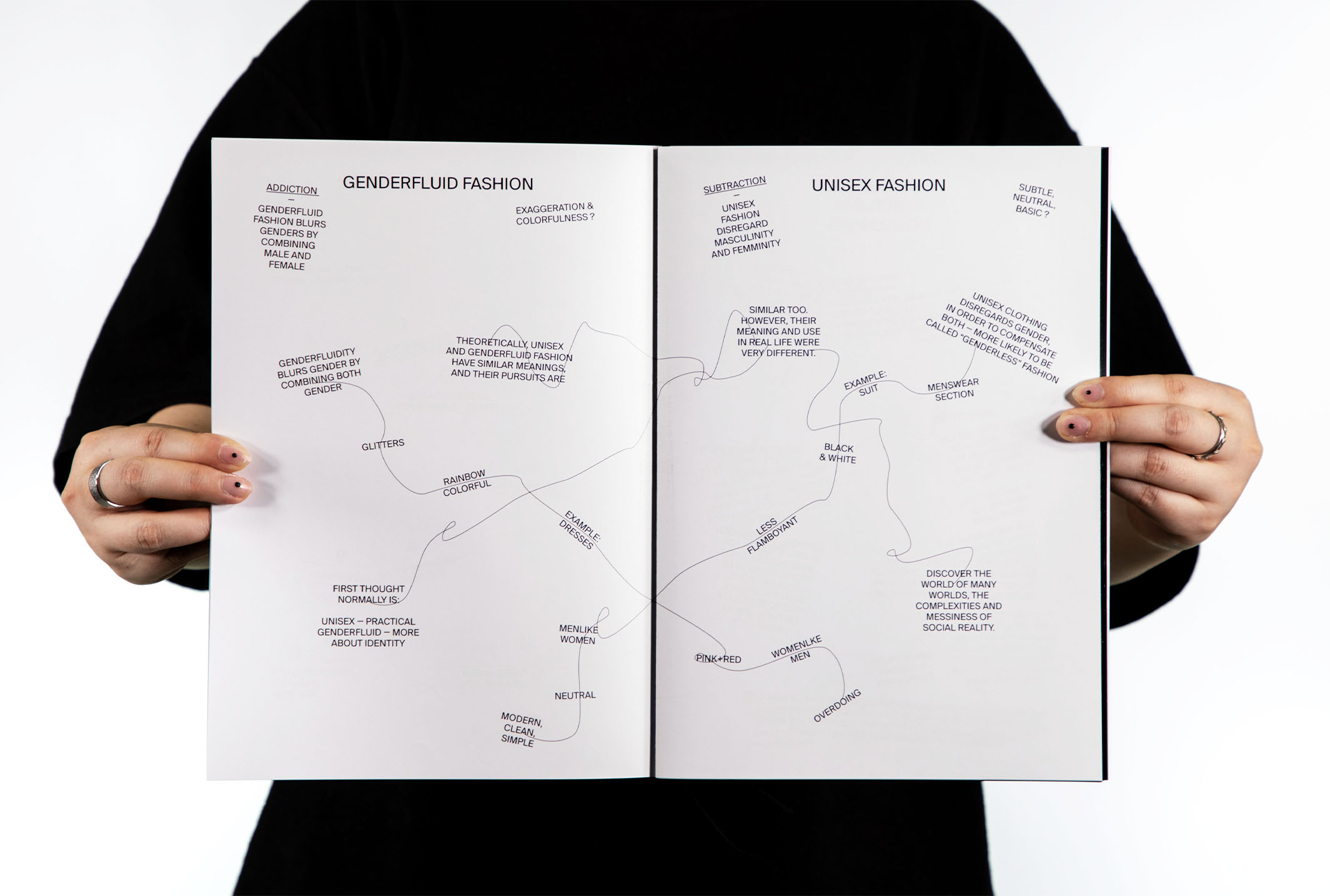1 /4 The project CO—BEING comes from the term of co-existence (Escobar, A., 2018) and it focuses on disrupting the depiction of stereotyping gender through fashion magazine covers.The main contribution of this investigation goes to the ongoing efforts to deconstruct gender dichotomy–amplified by stereotypes–, to pursue the co-existence of various genders—, which leads to a more nuanced world, reflecting our existing reality. The work consists of a publication that illustrates the research, as well as t-shirts, explored in this case, as a space for discussion.
2 /4 The goal of this work puts the emphasis on two different points: expanding fashion practices {by pluralising the idea of fashion as not only eurocentric and patriarchal} and acknowledging the messy nature of research, as a creative process carried out, on and through design.
3 /4 The work comes from written and visual experiments undergone using auto ethnography as a tool. Auto ethnography explores subjectivity to challenge objectivity; it is a self-investigation and self-implication into the research, it values the emotional as containing different levels of knowledge. The starting research question for this project is: how does the depiction of gender fluidity in fashion magazines, aimed at the co–existence of gender, distort the original goal and reveal a new kind of stereotype?
4 /4 The research considers fashion magazine covers carefully analysing colour, typography, makeup, expressions, poses, composition and layout. From there, the creation of collages helped to visually express how the notion of gender fludity and unisex were being portrayed. By deconstructing and recomposing the covers, it was possible to give life and meaning to new possibilities and new worlds, in order to present the complexity of the being. The practice–based research resulted in the production of a zine and some t-shirts.










